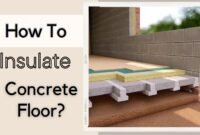What is unfaced insulation? This type of insulation, unlike its counterparts, such as foil-faced or kraft paper insulation, lacks a vapor barrier or retarder. You aren’t alone. Many homeowners don’t understand what’s happening to their houses or what kind of construction they are having.
You want to insulate your house, but you have never thought it could be a bit puzzling, and there are so many details about it. Read on, so you know which one to install and what kind of decision you can make.
What Is Unfaced Insulation? Understanding the Concept
The key difference between various types of insulation, like faced and unfaced, lies in the presence of a vapor retarder. Unfaced insulation, specifically, does not include a vapor barrier such as plastic or kraft paper facing, which is typically attached to one side of faced insulation.
The unfaced insulation is the insulation with no vapor retarder, which is plastic or paper facing.
On the other hand, Faced insulation includes a paper vapor retarder, often made of kraft paper or aluminum foil, designed to prevent moisture and reduce the risk of mildew and mold in your home.
Read also: What Is the Difference Between Faced And Unfaced Insulation
The faced insulation must be installed on attic ceilings, exterior basement, and exterior walls. You need to press the product to the (wall) cavity with the retarder facing outward (toward you).

It should fit snuggly into the cavity but not be compressed. Use a staple gun to keep the insulation intact if you need extra support. When you have this installation job, it’s imperative to check the building codes for the vapor retarder requirements.
When to Use Unfaced Insulation
Unfaced insulation is ideal for new construction or when adding to existing insulation in ceilings, interior walls, crawlspaces, and attics. It’s beneficial in parts of your home that don’t require insulation with a moisture barrier.
This would be an ideal option for an interior application that doesn’t face the outside part. It’s also great for rooms that don’t require moisture control, such as dining rooms, study rooms, and living rooms.
This should be snug and fit into the intended space, but you shouldn’t compress it like the unfaced type. This unfaced insulation must be cut perfectly. Always. Use the utility knife to do so. You shouldn’t fold it over if you want it to last.
How to Install Unfaced Insulation
How to do the installation on the wall?
- Place the unfaced insulation between (or across) the ceiling or wall. Put this insulation on the top part of the already existing material. Press it into the joists firmly, but you don’t want to compress the material beneath (such as the fiberglass), which can reduce the efficiency.
- Fasten the batts loosely with the plastic straps so they won’t shift too much.
- Cut the batts with the utility knife so it would fit just nicely. Don’t fold them over.
- Ensure you nail the unfaced (rigid) insulation within the exterior walls. You should nail the foam boards to the wall sheathing. Use a 3/8-inch galvanized nail head. Drive those nails vertically to the wall studs within each 16 (or 18) inch.
- After you finish the insulation, you may want to cover the unfaced (foam) panels with the usual (waterproof) house wrap.
Read also: How to Put Insulation in Ceiling
If you want to install it on the floor, you need to do these things:
- Push the unfaced part against the (floor) base, usually between the joists under the floor (in the crawl spaces).
- You can use the batts sized for joist spacing. This would make sure that there are no air gaps. Let the friction stay in place. Use fiberglass screening or chicken wire to nail it.
Final Words
You may think that all of these steps are complicated and difficult. But once you do everything, you’ll find it’s not as difficult as you think. But if you are overwhelmed with the entire process, you can always turn to professional service and hire them to do the work.


